|
|
Post by naiches2 on Nov 29, 2009 11:55:45 GMT -5
Stanley J. Morrow (b. 1843, Richland County, Ohio; d. 1921, Dallas, TX) Morrow learned photography from Matthew Brady late in the Civil War, and in 1864 produced stereo views of Ft. Lookout and other scenes under Brady’s imprint. In 1868 he moved to Yankton, Dakota Territory where for over fifteen years used the booming city as his base. As he traveled he set up a number of satellite studios throughout the Dakota and Montana area including Miles City, Montana. His primary format was the stereoptican view, but he made ambrotypes, carte de visites, and cabinet views of Indians such as Red Cloud and Sitting Bull, early photographs of the Little Bighorn including the burial of the bones, with Gen. Crook in the Black Hills in 1876, steamboats, Indian life, and many other western views. Using wet plate negatives he nevertheless was able to produce remarkable documentary images of the West. from www.andrewsmithgallery.com/exhibitions/western/western_two.html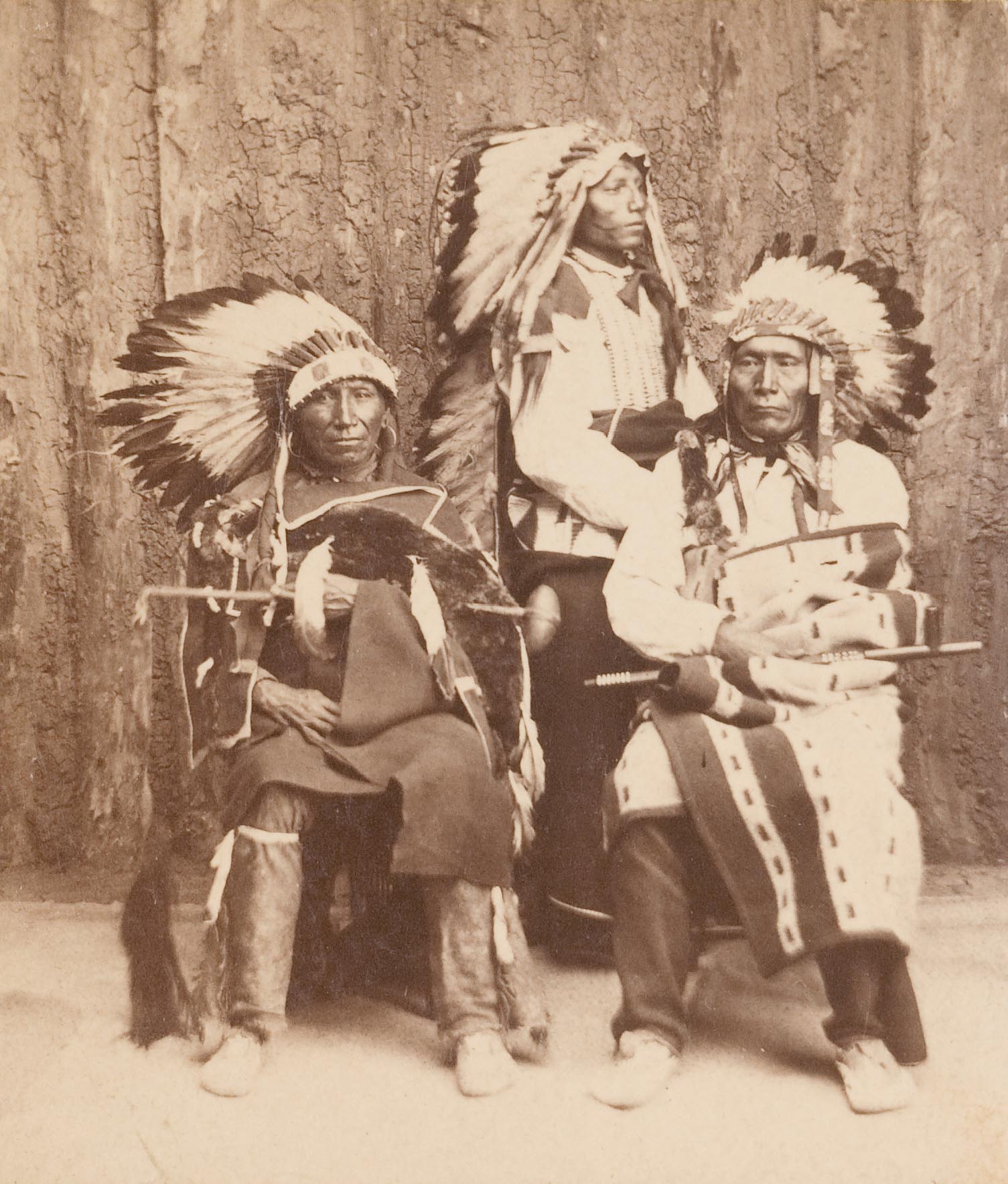
|
|
|
|
Post by naiches2 on Nov 29, 2009 12:04:35 GMT -5
Ponka Chiefs  Ponka Warrior 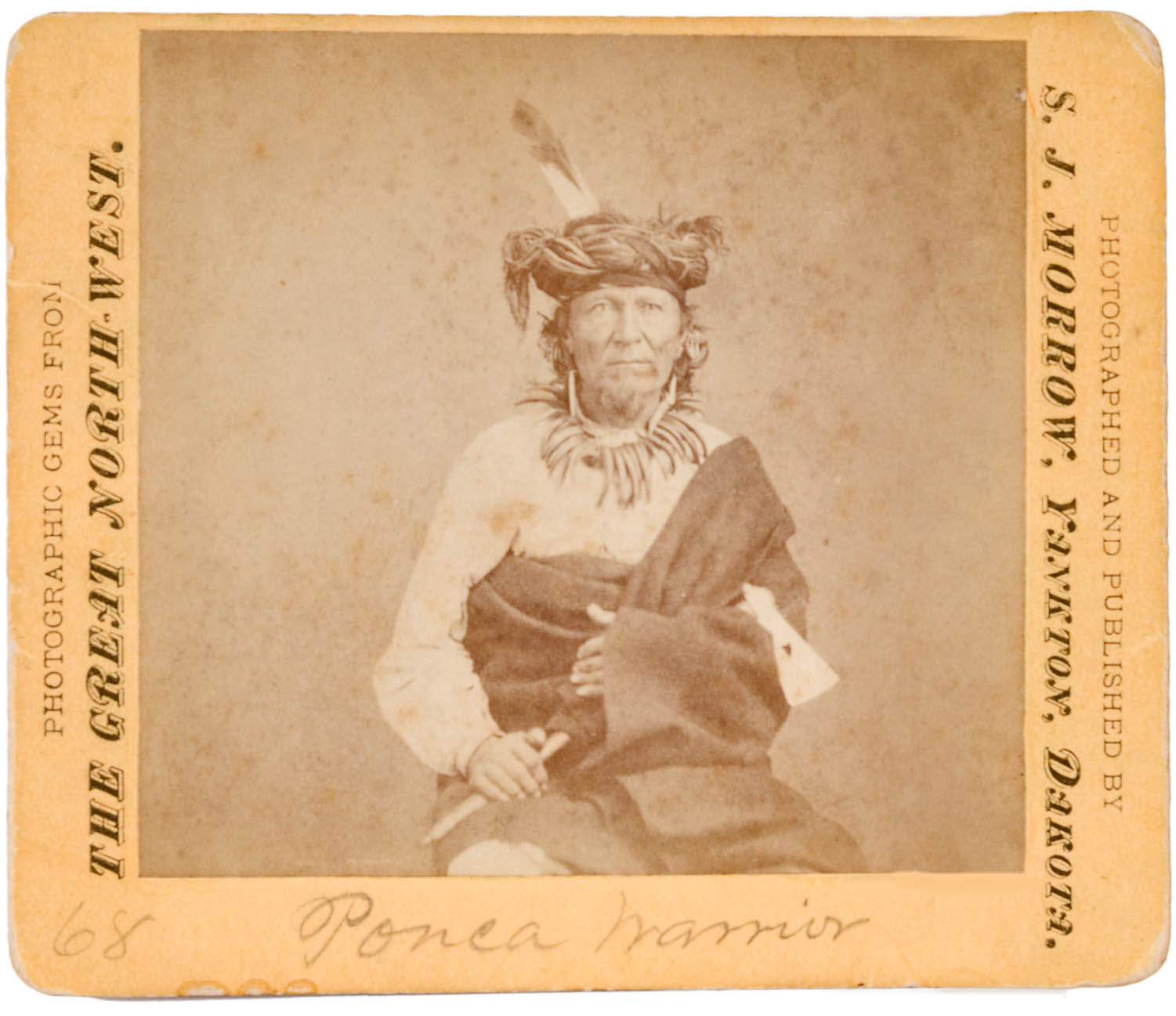 |
|
|
|
Post by naiches2 on Nov 29, 2009 12:09:33 GMT -5
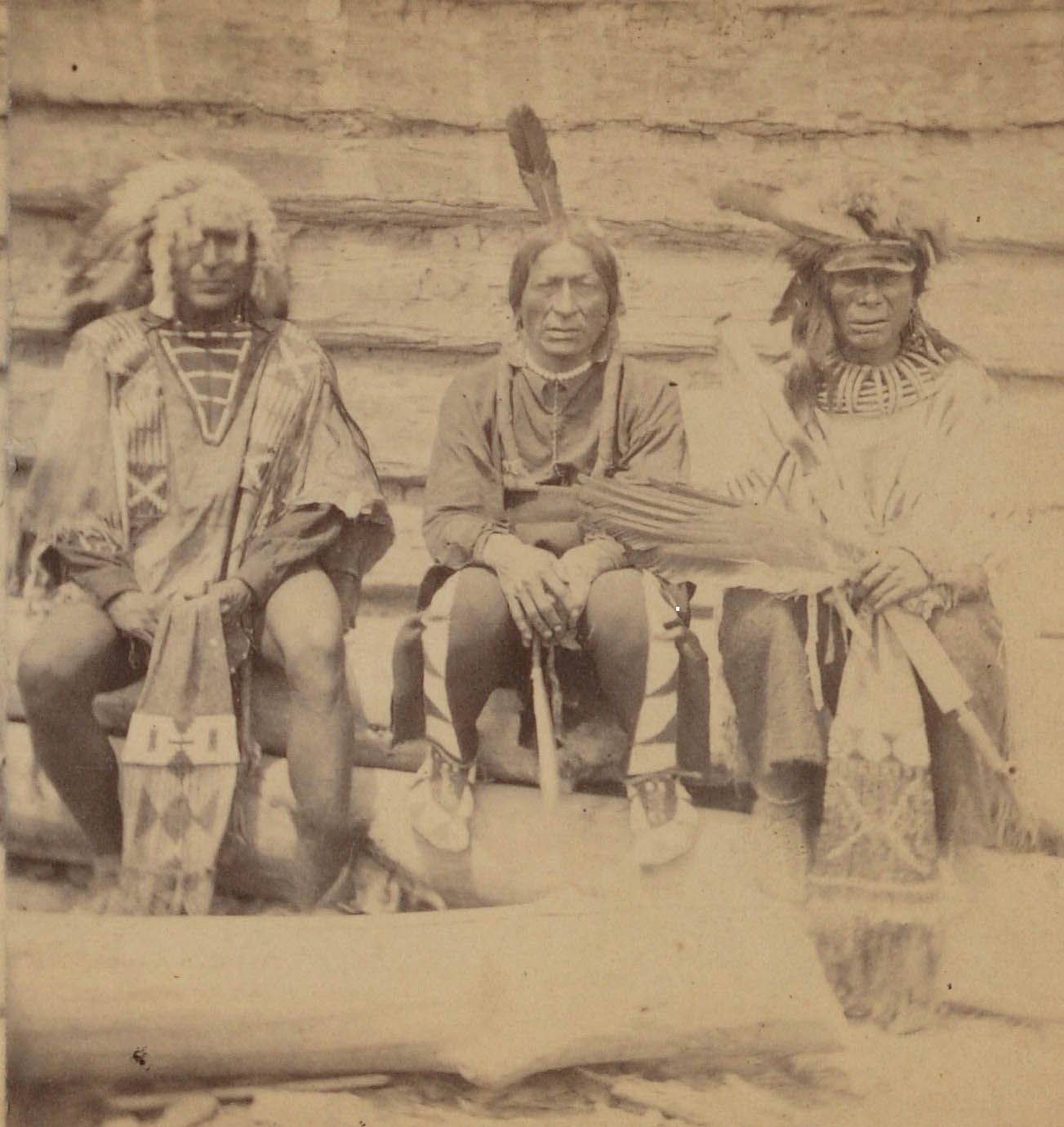 Upper Yanktonai 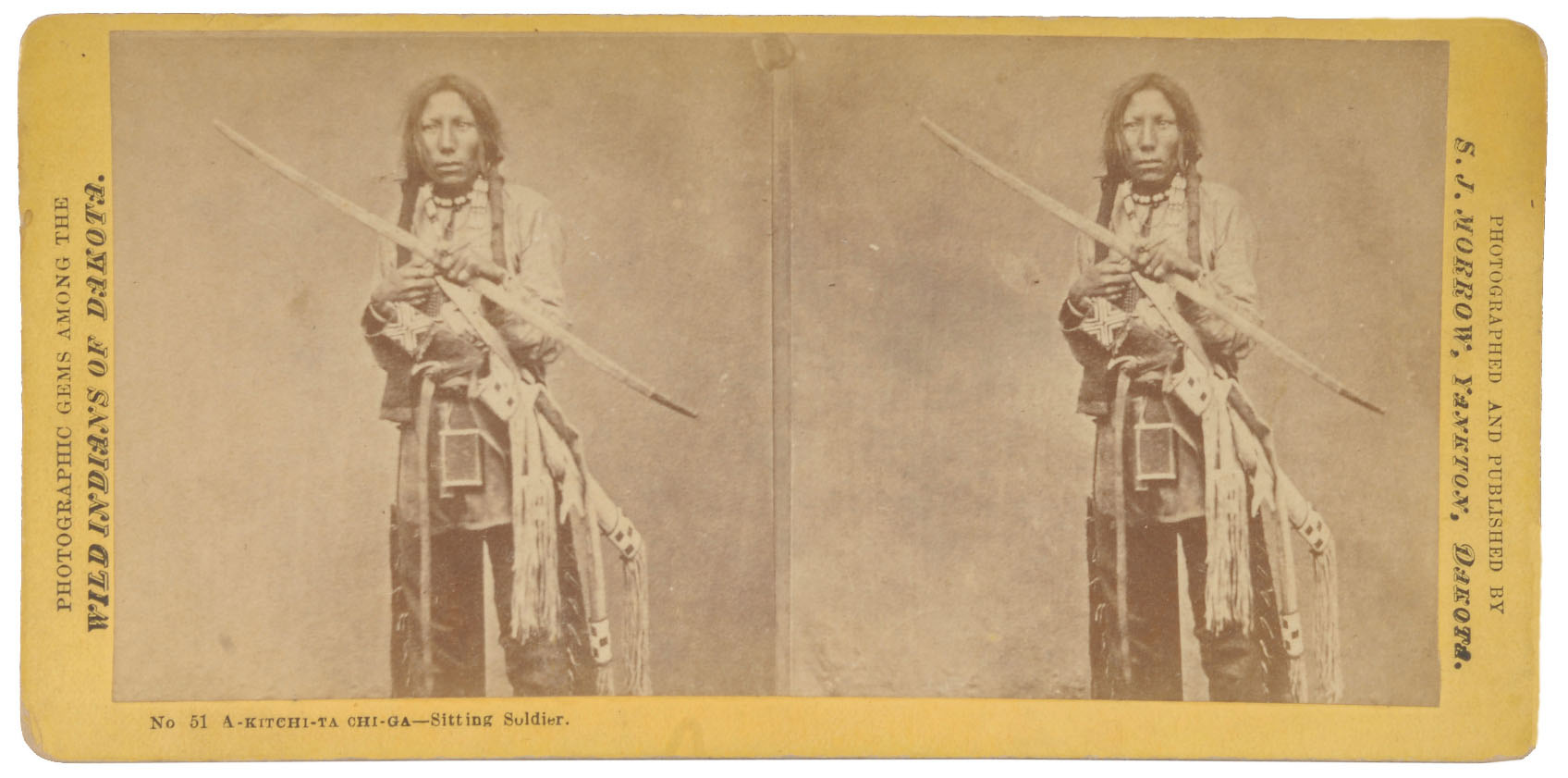 |
|
|
|
Post by naiches2 on Nov 29, 2009 12:12:31 GMT -5
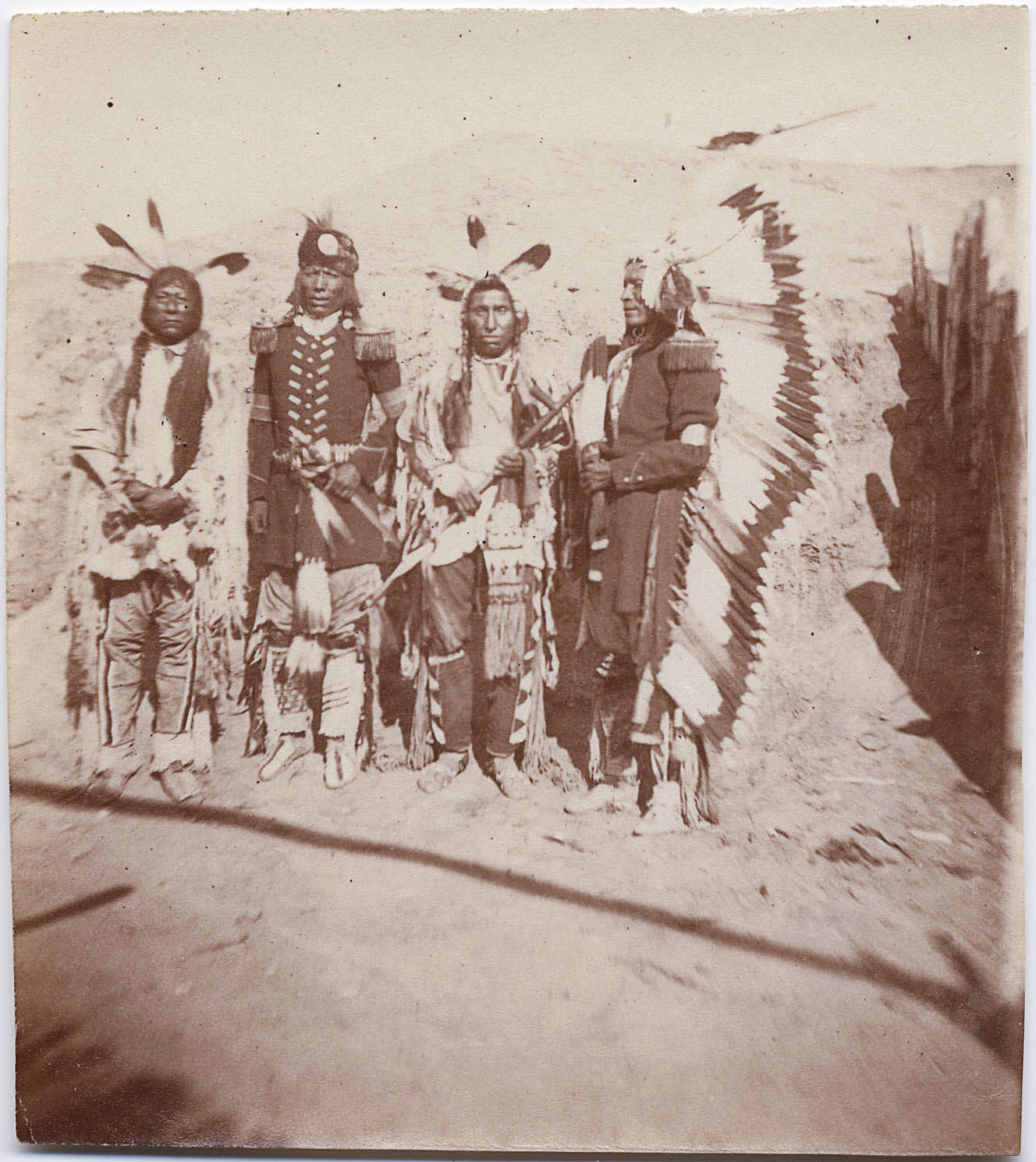 He That Stinks, Bobtail Bull, Yellow Wolf, and Sitting BeaHe |
|
|
|
Post by naiches2 on Nov 29, 2009 12:14:56 GMT -5
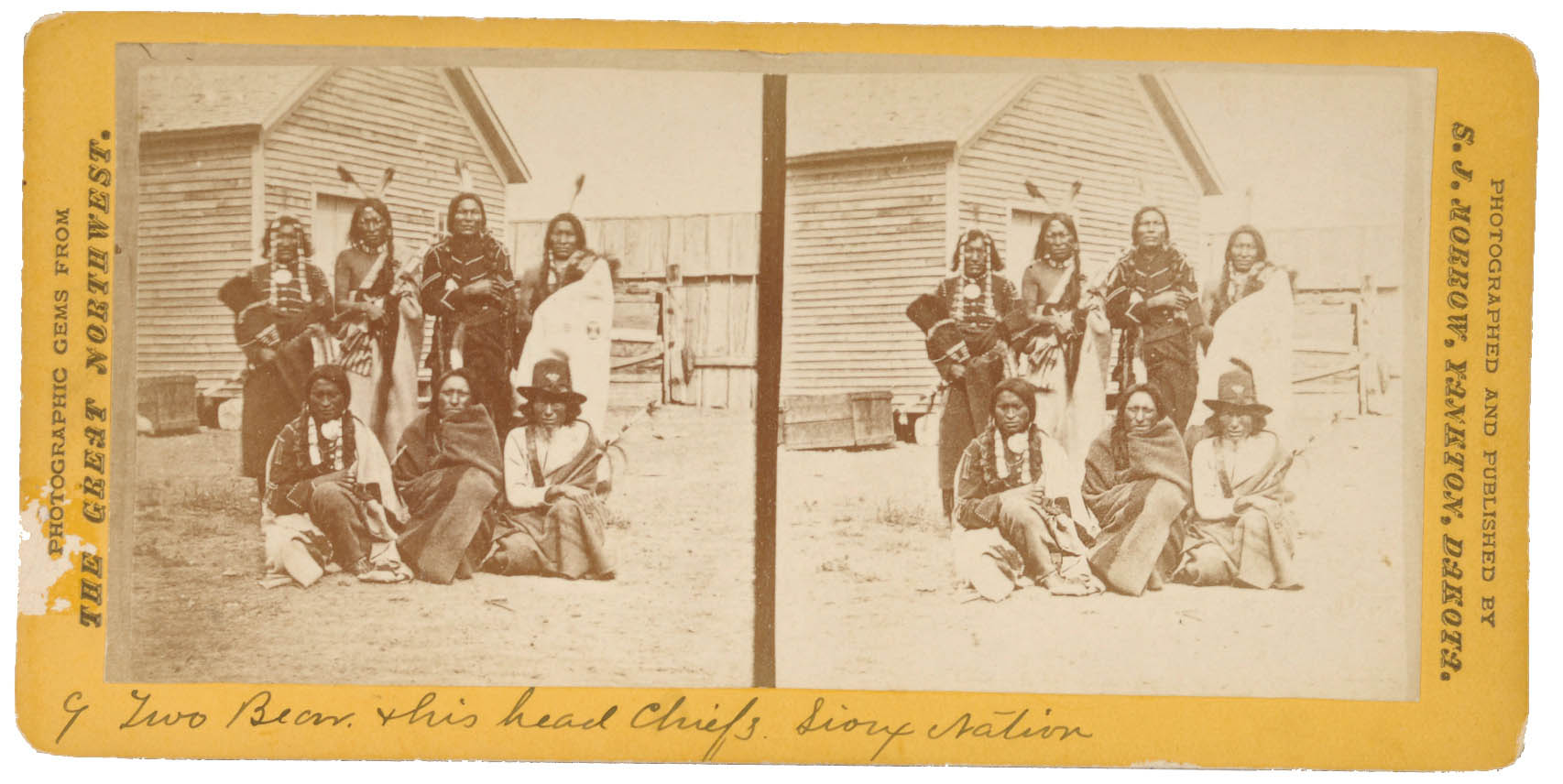 Two Bear Yanktonai |
|
|
|
Post by naiches2 on Nov 29, 2009 12:19:20 GMT -5
Cheyenne Warrior  and Sitting Soldier from our benefactors at Cowan's |
|
|
|
Post by charlie on Nov 30, 2009 3:15:47 GMT -5
Naiches: great images, as always! I love this photographer.We don't must forget that him, perhaps, succeeded to photograph the famous CRAZY HORSE. See the thread "Crazy in the Lodge" - Oglala. That wonderful image was labelled by him "CRAZY HORSE - Oglala chief".
|
|
|
|
Post by grahamew on Nov 30, 2009 12:13:55 GMT -5
The trouble with a lot of Morrow photos is that they've been misudentified. I've seen the Cheyenne man above identified as a Lakota from Cheyenne Rive and as an Arikara. And I'm none the wiser.
|
|
|
|
Post by naiches2 on Nov 30, 2009 16:47:44 GMT -5
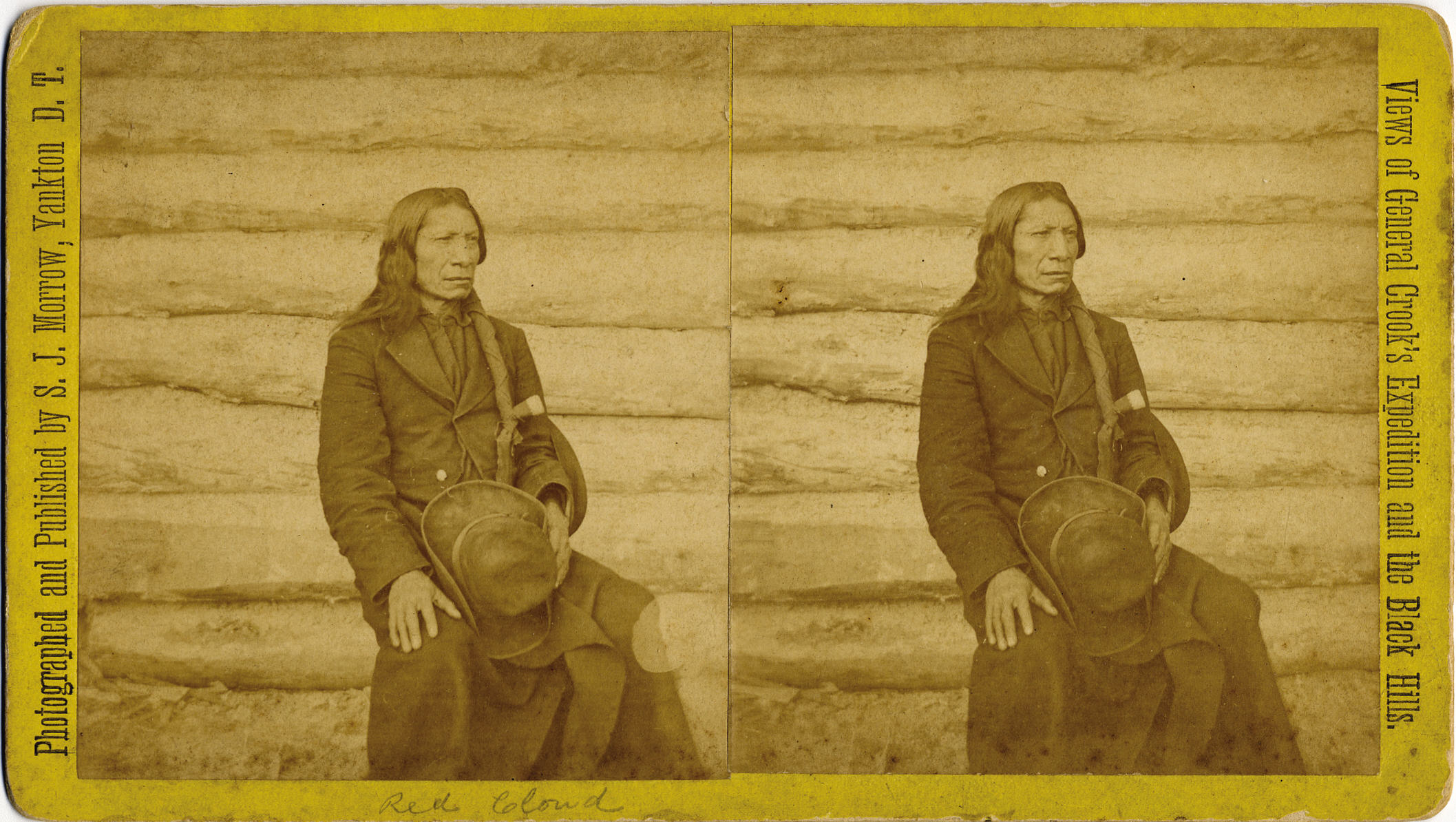 Red Cloud by Morrow |
|
|
|
Post by naiches2 on Nov 30, 2009 17:22:07 GMT -5
Photo and info from eBayA very rare S. J. Morrow stereoview of three Florida Indians in full native dress standing on railroad tracks in Florida. To their right is a man who is likely a railroad worker or Morrow's assistant. This is probably the South Florida Railroad, which Morrow photographed in 1887 according to Treadwell's biography of Morrow. Exact location unknown, but clearly Florida as it came with other identicaaly-mounted Morrow views of St. Augustine and other Florida locations. Note the grove of palm trees at the right of the view. Fine detail of the Indians' clothing and great three-dimensional effect in a viewer. See all 3 scans. Near excellent. I have never seen a Morrow stereoview of Florida on an imprinted mount. I have seen a couple of larger format photos on blue-gray cardstock like this stereoview....those larger photos had Morrow's stamped ID. A rare and possibly unique view with great content. This view was almost certainly from Morrow's personal archive, circa 1888, made by him from the surviving negatives after his disastrous studio fire in Florida around 1888. According to Treadwell's book, "Stereographers of the U.S.", the fire destroyed and damaged many of Morrow's Indian and western negatives. This view is one of the last of a grouping of identically-mounted views I had of Indian, Dakota mining, General Crook expedition, Deadwood and similar views. Also included were Florida views. Since Morrow moved to Florida ca. 1883, this would seem to confirm that these views were printed and mounted by Morrow from all of his surviving negatives (not just the Indian ones, but also his Florida images) to preserve as much of a record as he could of what he had taken. Moreover, all views showed some evidence of fire damage to the negative indicating the stereoviews were printed from the original glass negatives. This one has only slight fire evidence: several scattered specks in the negative. Slight age-curvature to mount, o/w near excellent. 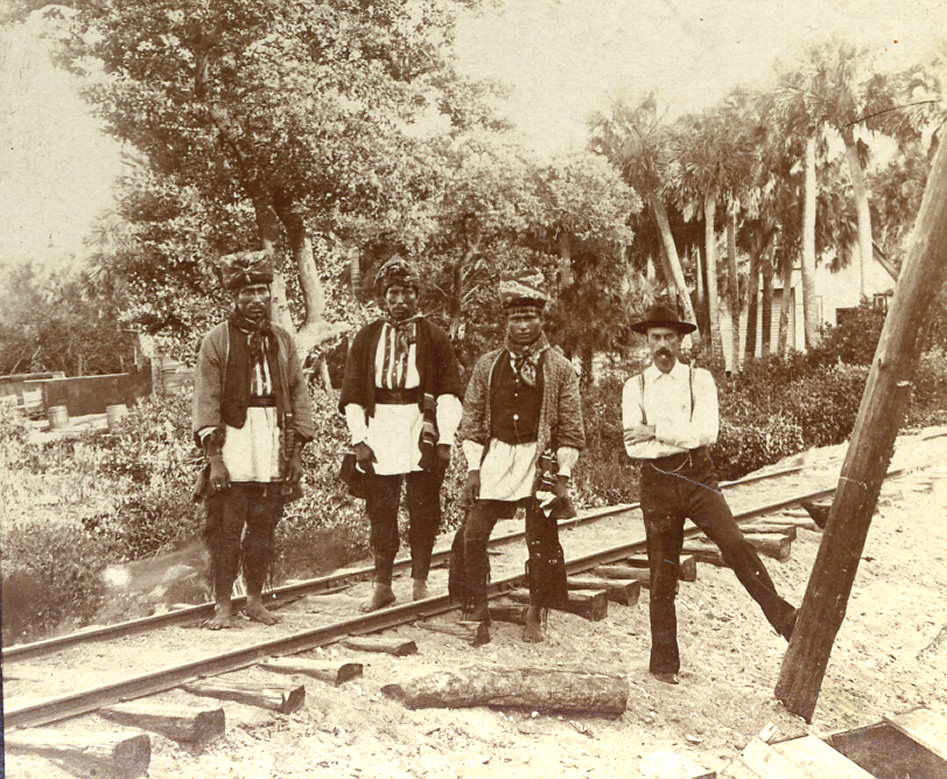
|
|
|
|
Post by grahamew on Nov 8, 2017 2:07:44 GMT -5
To whet the appetite: 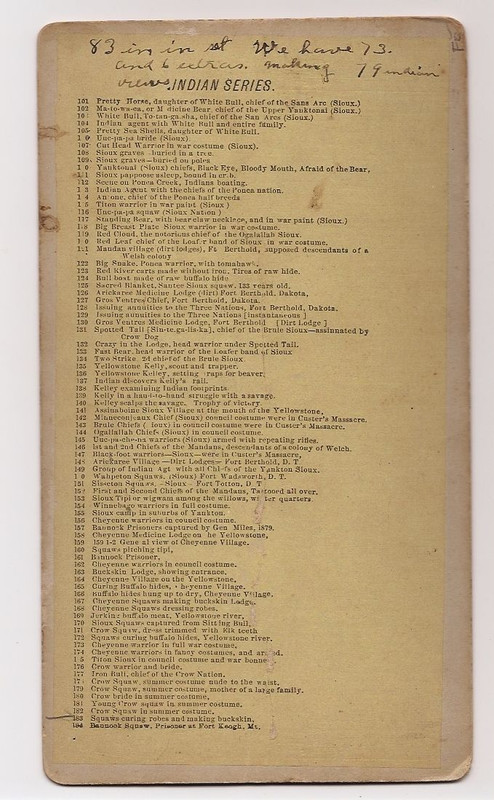 |
|
|
|
Post by Dietmar on Nov 10, 2017 10:02:21 GMT -5
Yeah! Please give me some time to sort some pictures, Grahame...
|
|
|
|
Post by Dietmar on Nov 10, 2017 17:33:42 GMT -5
PHOTOGRAPHIC GEMS OF THE GREAT NORTH-WEST
INDIAN SERIES.
101 Pretty Horse, daughter of White Bull, chief of the Sans Arc (Sioux.)
102 Ma-to-wa-ca, or Medicine Bear, chief of the Upper Yanktonai (Sioux)
103 White Bull, To-Tan-ga-ska, chief of the Sans Arc (Sioux.)
104 Indian agent with White Bull and entire family.
105 Pretty Sea Shells, daughter of White Bull
106 Unc-pa-pa bride [Sioux]
107 Cut Head Warrior in war costume, [Sioux]
108 Sioux graves – buried in a tree.
109 Sioux graves – buried on poles.
110 Yanktonai [Sioux] chiefs, Black Eye, Bloody Mouth, Afraif of Bear.
111 Sioux pappoose asleep, bound in crib.
112 Scene on Ponca Creek – Indians boating.
113 Indian agent with the chiefs of the Ponca nation.
114 Antone, chief of the Ponca half breeds.
115 Titon warrior in war paint [Sioux]
116 Unc-pa-pa squaw – Sioux nation.
117 Standing Bear, with bear claw necklace, and in war paint – Sioux.
118 Big Breast Plate, Sioux warrior in war costume.
119 Red Cloud, the notorious chief of the Ogalallah Sioux.
120 Red Leaf, chief of the Loafer band of Sioux, in war costume.
121 Mandan village (dirt lodges), Ft. Berthold, supposed descendants of a Welch colony.
122 Big Snake, Ponca warrior, with tomahawk.
123 Red River carts made without iron – tires of raw hide.
124 Bull boat made of raw buffalo hide.
125 Sacred Blanket, Santee Sioux squaw, 133 years old.
126 Arickaree Medicine lodge – dirt – Fort Bertold, Dakota.
127 Gros Ventre Chiefs, Fort Berthold, Dakota.
128 Issuing annuities to the three Nations, Fort Berthold, Dakota.
129 issuing annuities to the Three nations – instantaneous.
130 Gros Ventres Medicine Lodge, Fort Berthold – dirt lodge.
131 Spotted Tail – Sin-te-ga-lis-ka – chief of the brule Sioux – assassinated by Crow Dog.
132 Crazy in the Lodge, head warrior under Spotted Tail.
133 Fast Bear, head warrior of the Loafer band of Sioux.
134 Two Strike, second chief of the Brule Sioux.
135 Yellowstone Kelly, scout and trapper.
136 Yellowstone Kelly, setting traps for beaver.
137 Indian discovers Kelly’s trail.
138 Kelly examining Indian footprints.
139 Kelly in hand-to-hand struggle with a savage.
140 Kelly scalps a savage. Trophy of victory.
141 Assinaboine Sioux village at the mouth of the Yellowstone.
142 Minneconjeaux Chiefs – Sioux – in council costume. Were in Custer’s Massacre.
143 Brule Chiefs – Sioux - in council costume. Were in Custer’s Massacre.
144 Ogalallah Chiefs – Sioux – in council costume.
145 Unc-pa-che-na warriors – Sioux – armed with repeating rifles.
146 First and second Chiefs of the Mandans, descendants of a colony of Welch.
147 Blackfoot Warriors – Sioux – were in Custer’s Massacre.
148 Arickaree Village – dirt lodges – Fort Berthold, D.T.
149 Group – Indian Agent with all Chiefs of the Yankton Sioux.
150 Wahpeton Squaws – Sioux – Fort Wadsworth, D.T.
151 Sisseton Squaws – Sioux – Fort Totten, D.T.
152 First and Second Chiefs of the Mandans, tattooed all over.
153 Sioux Tipi or wigwam among the willows; winter quarters.
154 Winnebago warriors in full costume.
155 Sioux Camp, in suburbs of Yankton.
156 Cheyenne warriors in full costume.
157 Bannock Prisoners captured by General Miles, 1879.
158 Cheyenne medicine Lodge on the Yellowstone.
159 and 159 1-2 General view of the Cheyenne village.
160 Squaws pitching tipi.
161 Bannock Prisoner.
162 Cheyenne Warriors in council costume.
163 Buckskin Lodge, showing entrance.
164 Cheyenne Village on the Yellowstone.
165 Curing buffalo hides – Cheyenne village.
166 Buffalo hides hung up to dry – Cheyenne village.
167 Cheyenne Squaws making buckskin Lodge.
168 Cheyenne Squaws dressing robes.
169 Jerking buffalo meat, Yellowstone river.
170 Sioux Squaws captured from Sitting Bull.
171 Crow Squaw, dress trimmed with Elk teeth
172 Squaws curing buffalo hides, Yellowstone river.
173 Cheyenne warrior in full costume.
174 Cheyenne warriors in fancy costumes, and armed.
175 Titon Sioux in council costume and war bonnets.
176 Crow warrior and bride.
177 Iron Bull, chief of the Crow Nation.
178 Crow squaw, summer costume, nude to the waist.
179 Crow squaw, summer costume, mother of a large family.
180 Crow bride in summer costume.
181 Young Crow squaw in summer costume.
182 Crow squaw in summer costume.
183 Squaws curing robes and making buckskin.
184 Bannock Squaw, Prisoner at Fort Keogh, Montana.
|
|
|
|
Post by grahamew on Nov 11, 2017 5:14:46 GMT -5
I think a few points emerge from this: it's clear that this isn't the only numbering of Morrow's work; it's certainly not all of Morrow's Indian photos; there are possible variations (for example, there are at least three Morrow portraits of Antoine, the Ponca leader but only one here); this numbering - I think - contains the set of Arikara/Hidatsa men labelled as Lakota (presumably so they'd sell better), yet elsewhere, they're labelled correctly; finally, like the work of the Hamiltons, Goff, (early) Cross, (early) Huffman, Godkin and Mitchell, it's a phenomenal body of work documenting people in that era of at least semi-subsistence before complete dependency on the US government in only a few years - as opposed to the bulk of Barry's studio work, for example, where Rain in the Face et al are in variations of 'traditional' dress whereas you can see in his work outside the studio (the 1886(?) census, for example), hats and coat dominate.
|
|
|
|
Post by Dietmar on Nov 11, 2017 6:48:50 GMT -5
I totally agree, Grahame. I´m just about to check which of the listed photos we know already. The majority of the pictures are available online, but from various sources, archives and auction sites.
Unfortunately I haven´t seen a list of the first 100 of Morrow´s "Photographic Gems of the North-West" series yet.
|
|